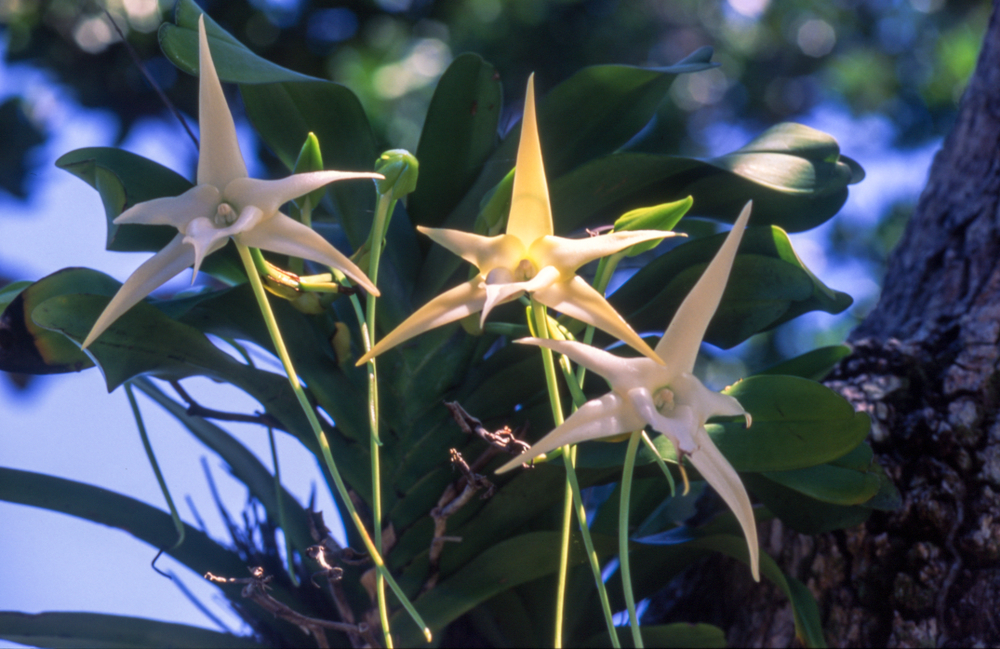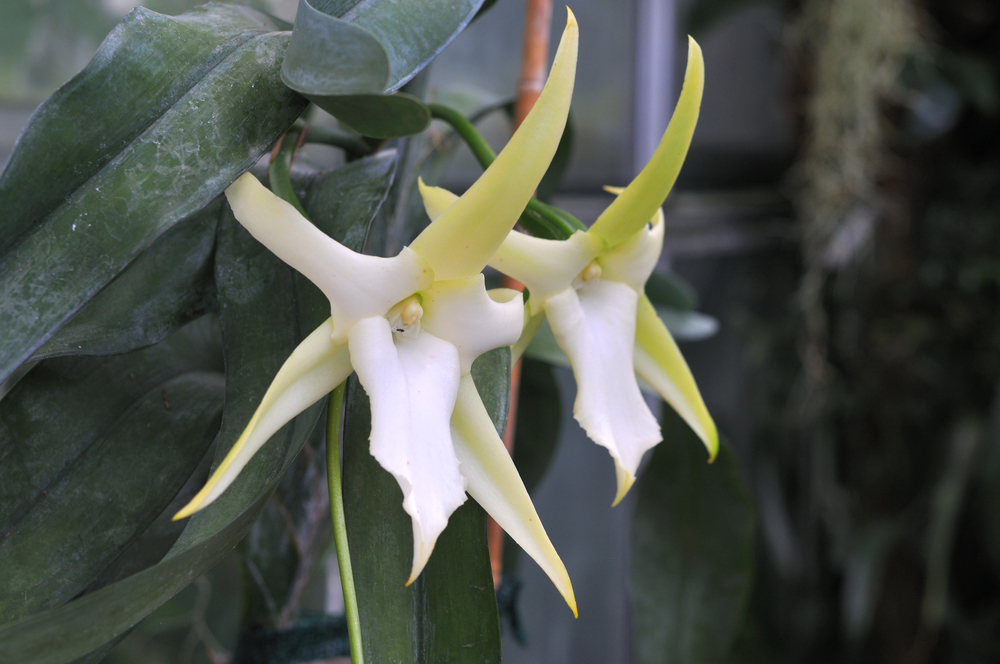Even the most experienced plant parents get nervous around orchids. They’re notoriously hard to care for and most varieties are rare and expensive, so picking one up at the garden center isn’t always an option.
However, their bright colors, unique patterns, and interesting flower shapes make them incredibly appealing. If you can't resist the lure of orchids and want to add a particularly stunning one to your collection, then you're in luck! Here's a handy guide to help you grow Darwin's orchid.

What is a Darwin's orchid?
The Angraecum sesquipedale is native to Madagascar and has a lot of nicknames, including Darwin’s orchid, Madagascar orchid, Christmas orchid, Comet orchid, King of Angraecum, and Star of Bethlehem orchid. No matter what you call it, this orchid is stunning and will make a fantastic addition to any orchid collection.
These plants are slow-growing but can eventually reach 3 feet tall. Their leaves are dark green with hints of gray, and their flowers are star-shaped. Darwin's orchid typically grows in coastal areas and gets rainfall throughout the year, but it blooms in the winter and can produce more than one bloom per plant. The juvenile flowers are whitish-green and transform to pure white when mature. Surprisingly, these blooms can last up to two months!

How to care for a Darwin's orchid
While this plant is gorgeous, its care requirements are quite tricky and not beginner-friendly. This plant is probably best with an experienced and maybe even advanced plant enthusiast who already has experience with orchids.
Step 1: Use a bark-based potting soil for improved drainage.
You can look for potting soils specifically labeled as for orchids, or you can make your own. Proper drainage is important. Since orchids enjoy wet soil, poor drainage can easily lead to root rot.
Step 2: Keep the soil moist.
This means watering them daily during summer, especially if it is blooming. You can reduce watering during winter, but make sure the soil doesn't dry out completely.
Step 3: Place the orchid in bright, indirect light.
Since Darwin's orchid is adapted to growing in trees, where it is sheltered from direct light, it is sensitive to direct light. Hanging a lightweight curtain over the window can protect your orchid from sunburns.
Step 4: To encourage blooms, increase the amount of light your orchid gets between September and November,
Step 5: Fertilize your orchid every 7 to 10 days with a high-nitrogen fertilizer.
If you aren't sure what constitutes high-nitrogen, look for fertilizer specifically marketed as being for orchids.
Step 6: Regulate the temperature for your Darwin's orchid.
This orchid is more particular about the temperature than other plants. The temperature should be between 70 and 85 degrees Fahrenheit during the day in summer and between 60 and 75 degrees during the day in winter. At night, the temperature should be 10 to 15 degrees lower.
Step 7: Keep the humidity as close to 80% as possible.
Darwin's orchids need a high humidity environment year round. Investing in a quality humidifier will help ensure that your orchid doesn't dry out.
Step 8: Repot your orchid every two to three years.
Step 9: Propagate your orchid by separating the pups (baby plants) from the parent when the pup's roots are 1 or 2 inches long.
The pups can then be repotted to grow into a second orchid plant. Separating the pups before their roots are long enough can cause the pup to die. However, if you leave the pups attached for much longer, then you can't safely remove them from the parent. You don't need to remove them, though! You can leave them attached, resulting in a larger orchid plant.
Now that you have a better understanding of what this plant needs, you can make a more educated decision about whether or not you should add this tricky plant to your home. Although they’re beautiful, they’re not easy to care for and require very special setups to ensure they live happy and healthy lives.
Editors' Recommendations
- Everything you need to know about trailing succulents care for lush, thick growth
- How to pick the perfect orchid pots for healthy blooms
- Beyond basil and cilantro, add these unique plants to your indoor herb garden
- Beautiful, low-maintenance pothos varieties to add to your plant collection
- 5 easy-care spider plant varieties perfect for any home garden



